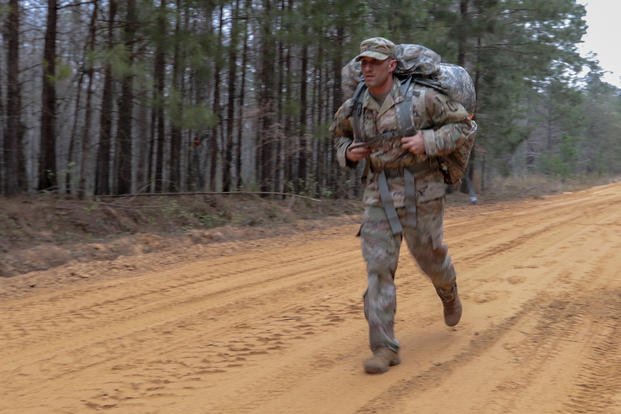For many, the term "ruck" is a new word.
Defining ruck is difficult to someone who never has moved out with 50+ pounds in a backpack for many, many miles. The definition can be as simple as walking around with a backpack on a hike or as difficult as moving fast with all your military gear, loaded for bear, over rugged terrain, infiltrating to your objective. But the terms ruck, hump or forced march all really mean getting your gear from A to B in a backpack. Here is a question that prompted this discussion:
Stew, I am adding backpacking to my workouts -- usually 20-25 lbs. My buddy told me I was "rucking." After a Google search, I see that is what I am doing, but I really have no idea what kind of pace is a ruck. Is it a fast walk, slow jog, nice and easy walk so you can go all day? How should I incorporate it into my workouts?
First, thanks for "Googling" the term ruck, because I likely would have told you to go there first anyway. But your question prompted me to do a little test. I just completed a three-mile ruck test, and it went like this:
Mile one: Easy pace/hike -- I walked a mile with my 45-pound pack, carrying my phone, making calls, answering texts, completely distracted from any challenging pace. It took me 18 minutes to walk a mile. To put this in perspective, the Army minimum standard requirement is 15 minutes per mile. So a slow walk still will be a workout, but it will not challenge your cardiovascular system. I call this an easy, conversational pace. Too slow for a good workout, but fine for walking the dog on a nature trail, enjoying the scenery.
Mile two: Fast walk pace -- The second mile was a faster walking pace, similar to power-walking. This pace requires some effort, but nothing overly challenging, and you still can hold conversations with minimal effort. This mile took 14 minutes to walk, and it is very maintainable for many hours/miles. This pace is a good pace to master, as it is typically a fall-back pace when you need to take a breather from the faster pace below. This makes for a decent workout if you have a few hours for fast walking.
Mile three: Slow jog/rucking pace -- Now this is what I would call "rucking". That is -- moving out at a pace that is only sustainable if you are conditioned for it. It looks like a combination of a fast walk/slow jog. This mile took me under 11 minutes to complete, which is about right as I typically take 42-45 minutes to ruck four miles.
Any faster for me hurts my knees and back more than my lungs, so I back it down just a notch so I am faster than the minimum rucking standard but slow enough to maintain for longer distances without structural pain.
Enjoy the rucking. See Go Ruck if you want to take your rucking to the next level.
Related article: How many calories does rucking burn?
Stew Smith is a former Navy SEAL and fitness author certified as a Strength and Conditioning Specialist (CSCS) with the National Strength and Conditioning Association. Visit his Fitness eBook store if you're looking to start a workout program to create a healthy lifestyle. Send your fitness questions to stew@stewsmith.com.
Want to Learn More About Military Life?
Whether you're thinking of joining the military, looking for fitness and basic training tips, or keeping up with military life and benefits, Military.com has you covered. Subscribe to Military.com to have military news, updates and resources delivered directly to your inbox.



















